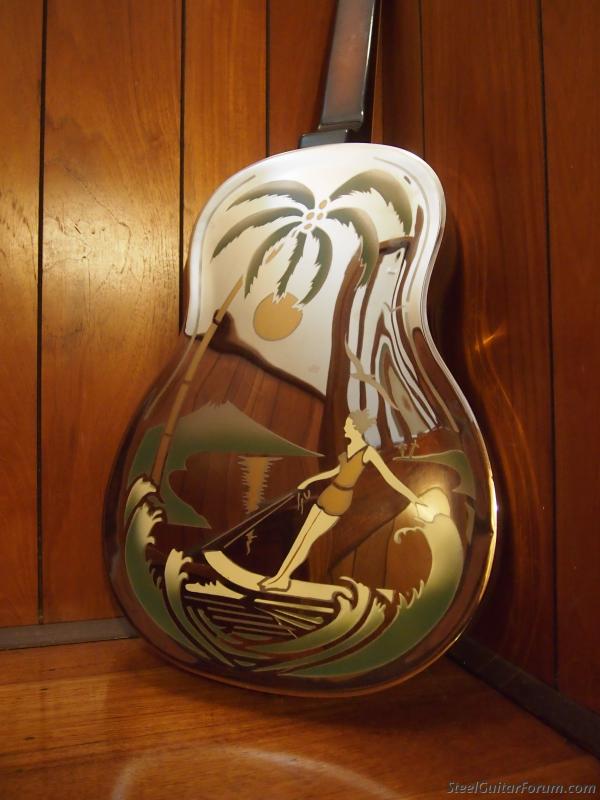I enjoyed and appreciated all the info on the thread about gaskets. By the way, what do you all use to clean the bodies of these vintage tricones?
I was lucky enough to have just acquired an early tricone, a 1927 Style 1 square neck with the serial number 163. I also have a 1930 Style 1, so here's my observations about the differences. I'll try to post some photos at the bottom.
1) The 1927 has the thin, hand soldered grills, the 1930 has machine stamped grills.
2) The 1927 has a flat back, the 1930 has a raised edge.
3) The 1927 neck thickness is 29mm, the 1930 is 32mm.
4) The 1927 width of the fret board at the 1st fret is 45mm, the 1930 is 49mm.
5) The wood of the headstock and fretboard seems different but I can't be sure.
6) The 1927 has "Pat Pend" stamped below the fretboard, the 1930 has patent numbers.
7) The 1927 has 1 dot at the 12th fret, the 1930 has 2.
9) The 1927 is 75mm depth at the shoulder, the 1930 is 72mm.
10) The 1927 has a wood sound well, the 1930 is metal.
I didn't see any evidence of gaskets under the cones, though it seems there was a gasket on the rim where the cover plate sits.
A few other observations...someone pencilled in the serial number inside the back of the guitar, as well as on the back of the cover plate. The inside of the cover plate looks clearly hand-soldered, though I can't remember what my 1930 looks like. Also the posts that hold up the wood bar look different than the 1930 one.
Overall, the 1927 definitely has a bit of a more handmade look to it. I have read some sources that indicate that these early ones were made differently than the ones starting around serial number 200, and my observations of would lead me to agree.
Now the important thing...the sound! Currently, the 1927 is quieter than the 1930, a little more piercing on the higher pitches, but missing more of the bottom end. Unfortunately the cones in the 1927 are a little rough, and it looks like a replacement will be necessary.
Anyway, here's a few pics...enjoy!
Peter

The 1927 on top, 1930 below

The underside of the wood sound well, painted silver.

post and bottom of guitar

underside of cover plate








 [/img]
[/img]

